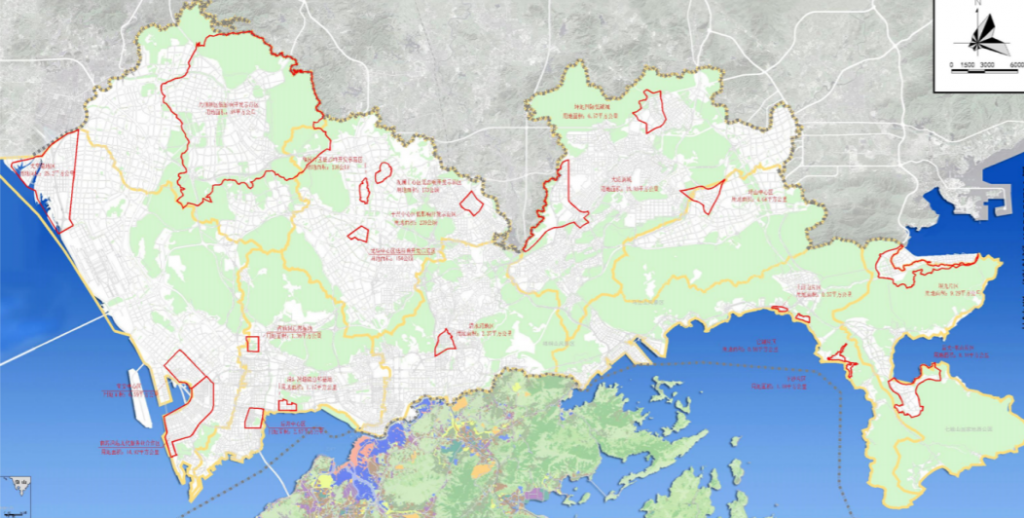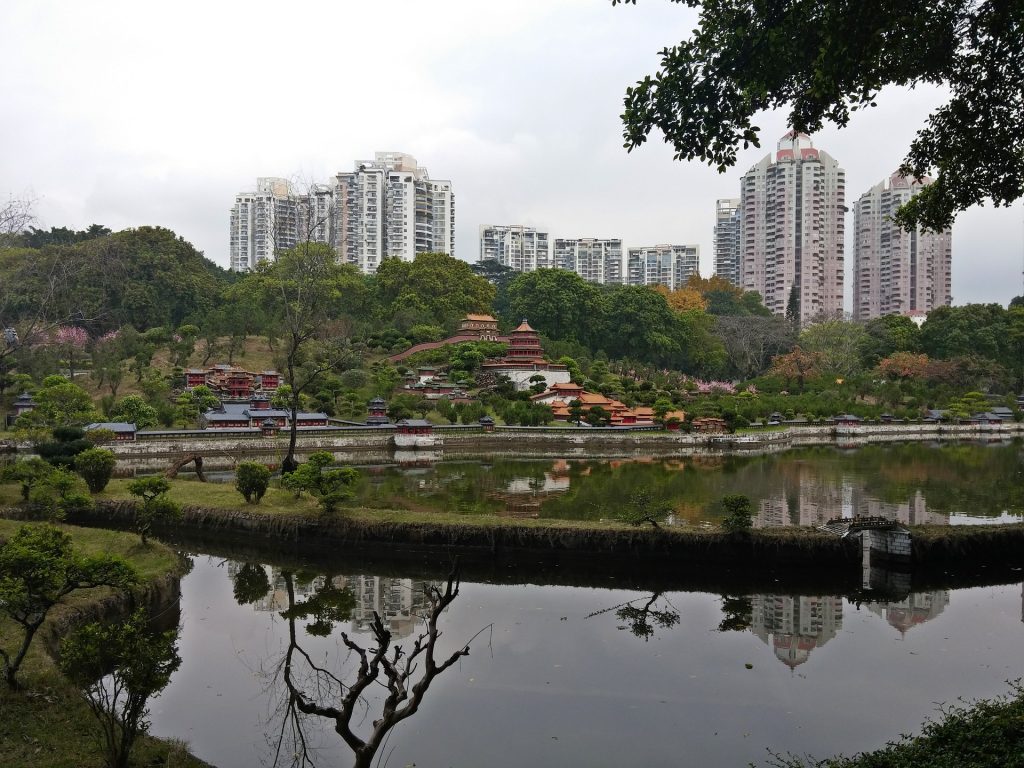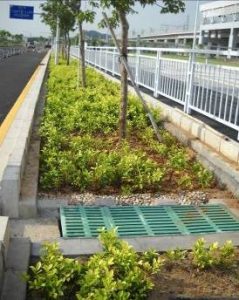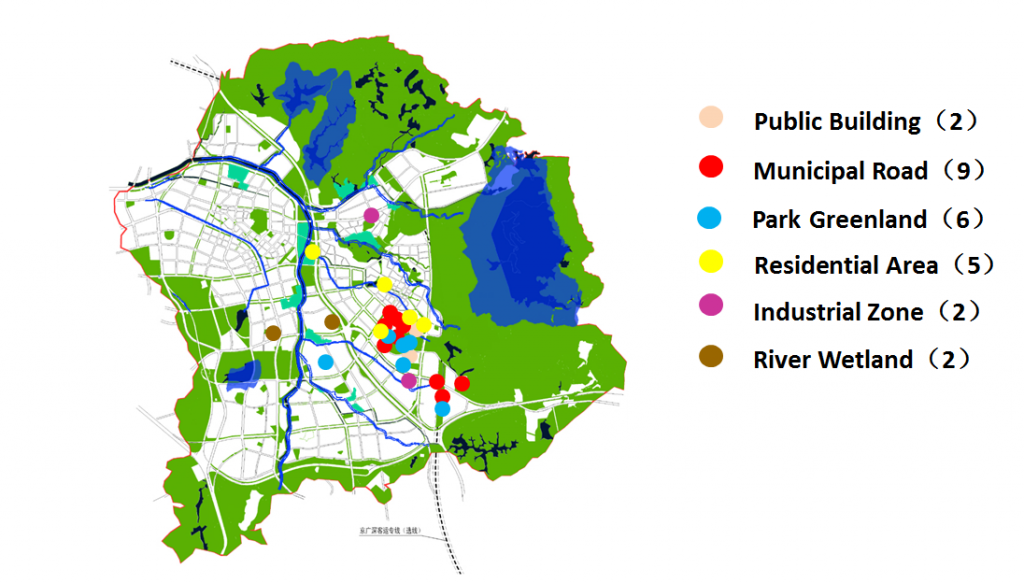A Fresh Metropolis
The booming Chinese city will follow the sponge city approach
The city of Shenzhen was established in 1979, and in a swift 36 years, this tiny border town of just over 30,000 people has grown into a modern metropolis. However, rapid urbanization has brought with it many challenges, including serious water crises in the form of stormwater pollution and flood risks.
The city is gearing up for an uncertain future ahead, and has established a flood control program called the “Shenzhen Water Strategy.” The four basic measures of the Strategy are: the protection of water resources, the recovery of water in the environment, the guarantee of water safety, and the enhancement of visible water. To complement this strategy, the city has also come up with “The Working Plan of Shenzhen’s Flood Control and Water Improvement (2015-2020),” influenced by the Sponge City concept as an important component for all future development.
Solutions to Shenzhen’s Resource Shortages
The rapid growth in Shenzhen means that demand often outstrips supply. As a result, many water challenges now plague the city. It has been estimated that Shenzhen will face water shortages of 690 and 890 million cubic metres by 2020 and 2030 respectively.
Shenzhen is aware of these issues and is taking action, aiming to be an urban water leader among rapidly developing cities through the implementation of circular economy concepts and coordinating departments across the city.
A Sponge City in the Works!
Shenzhen has become one of the earliest adopters of the Sponge City concept, with the introduction of Low Impact Development (LID) in China. In 2004, the city began to implement concepts such as rainfall infiltration, retention, and storage in new construction projects.
In 2009, these commitments were strengthened and relevant polices were enacted to ensure resilient planning standards. The city chose the Guanming New District as the demonstration zone for all things sponge-related. Work across municipal government sectors has since been coordinated, harmonizing Shenzhen’s Water Strategy. Citizens are engaged through public hearings and knowledge sharing, and financing platforms have been created.
So what exactly has this demonstration area achieved? Guangming New Area has 26 LID projects within the new developments, residential and industrial areas, parks, and roads. For example, Guangming’s People’s Sports Center has been built with green roofs, rain gardens and pervious pavements, which have a capacity to capture more than 60% of annual rainfall. New roadways include sunken green spaces, permeable driveways, bicycle paths, and sidewalks. These adaptations will increase the drainage capacity and reduce runoff. As all of these projects and more are applied in the Guangming New Area, they can provide the adaptability and flexibility needed to gradually extend throughout the whole city.
Case Study: Futian River, a Liveable Urban Ecosystem
Futian River is located in Shenzhen Futian District and runs through the central area of the city. Unprecedented urban development resulted in severe urban water pollution and damaged ecosystems within the basin. The City addressed this issue through sewage management and a combination of water reuse and wetland purification systems. Sewage collection and treatment capacities were improved with a collection rate of 100%. Today, the indicators of water quality have reached the surface water quality requirements, with improved urban liveability and ecosystems.

Photo by Xuqing Jia on Unsplash
4 Levels of Action - Shenzhen's Progress Towards the Principles
Regenerative Water Services
• Shenzhen Blueline Management Regulations
• Shenzhen Water Conservation Regulations
• Technical Specifications for Rainwater Utilization Engineering & Water Quality Standard of Reclaimed Water and Rainwater
• Nutrient recovery by sludge reuse
• Sponge City Construction
• Many projects concurrently aim to improve resilience as outlined in the Guangming New Area projects
Water Sensitive Urban Design
• Low Impact Development (LID) facilities like rain gardens, wetlands, etc.
• Flood Control Standards
• Futian River improved liveability
• Shenzhen promotes environmental friendly materials for buildings
Basin Connected Cities
• Division of drinking water source protection areas
• New wetlands, green infrastructure and more reduce water pollution, as seen in the Futian River example
• Shenzhen Headquarters Office for flood control, drought, sea-level rise and typhoon preparedness
Water-Wise Communities
• Public hearings, online communication the environmental public interest litigation, etc.
• Water, urban planning, and landscape science experts working together
• The Urban Planning & Design Institute of Shenzhen (UPDIS). LID Research Centre
• Low Impact Development Research Centre with a crew of over 20 people, majoring in municipal engineering, environmental engineering, ecology, geographic information, urban planning, etc.
• Collaboration across sectors
• Leaders are clear on Sponge City Vision and taking action based on a strong vision
Blog posts
Latest opinions and insights relevant to the water sector





